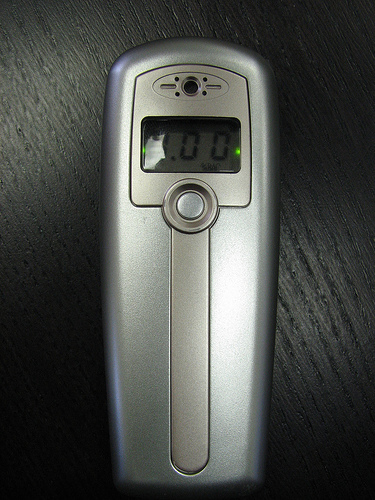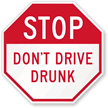Should you bother buying a personal breathalyzer?
Nearly all U.S. states have a standard .08 blood alcohol content (BAC) limit in place for drivers. Driving drunk can have life-changing consequence, from injury and death to arrest and skyrocketing insurance premiums. For some drivers, a personal breath analyzer (often known by the brand name, Breathalyzer) may help increase safety on the road.
As most drivers are aware, a breath analyzer breaks down BAC based on the user’s breath. Breath analysis works because alcohol can be detected on the breath — alcohol isn’t immediately digested once released into the blood stream. Law enforcement often uses breath analyzers on drivers pulled over for driving under the influence. But personal Breathalyzers are on the increase — in fact, as of July 2012, all legal drivers in France are required to have one accessible, and many bars, restaurants, and event venues are offering them to patrons.

An example of a commercial breath analyzer, available for the public. From mmechtley.
Personal Breathalyzer use is on the rise. In fact, reports MSN Money, sales of breath alcohol analyzers reached $284.6 million in 2011, according to Wintergreen Research. That research company expects the figure to reach $3.2 billion by 2018 “as prices fall and accuracy improves.”
Of course, just because a driver blows an acceptable BAC well outside the .09 BAC danger zone doesn’t mean that he is still safe to drive. Notes MSN, “Blowing a number under the legal limit is not a free pass to drive. Impairment is more than just a number, and it is possible to be under the legal limit and still be arrested.”
But a Breathalyzer can still be useful — adults like to know roughly where they’re at on the BAC scale, and if even a small percentage of drunk drivers are kept off the road by feedback from Breathalyzers, lives could be saved.
What to look for in a breath analyzer
There are four types of Breathalyzers on the market: fuel cell, semiconductors, crystals, and keychains or phone applications. Fuel cell analyzers, retailing for $100 and up, are the most similar to the devices used by law enforcement officers out on the road. “The fuel cell produces an electrical charge when it interacts with alcohol that can be precisely measured and translated into a BAC reading.”
Semiconductor devices use a semiconductor as a sensor — but be careful that the device you purchase isn’t a novelty item, as some are. “The type of semiconductor material is what separates the toys from the real thing,” reports MSN. The silicon oxide-based models are more accurate, and cost $85 to $250.
Crystal devices are single-use and disposable, and are used by squeezing the device, then blowing into it. The crystals change hue to indicate a raised BAC level and are “fairly accurate.”
Keychains and smartphone applications should not be trusted to accurately test BAC. Don’t purchase breath analyzers that retail for less than $50, that are attached to a keychain, or that are connectable to your smartphone. Smartphone apps that claim to test BAC should be used for entertainment only!
Pay attention to four factors when buying a breath analyzer.
- Make sure any break analyzer you’re looking at is FDA-certified.
- Confirm that it features an accuracy rating: “The highest accuracy ratings for testers run around +/-0.005. Most experts recommend a device with an accuracy rating of at least +/-.01.,” according to MSN.
- Your breath analyzer should have a mouthpiece affixed to it, which ascertains that the breath isn’t affected by contaminants or smoke.
- Accurate devices will need calibration (except for disposable devices, and those that include a replaceable sensor module). If the manufacturer doesn’t provide instructions on recalibration, which can run $20-$50, the device may not be trustworthy.
So, all things considered, should you buy a breathalyzer?
At the end of the day, if you think you’re likely to be walking the line between sober and drunk when you need to take the wheel, you should definitely purchase a breath analyzer. Breathalyzers can let you know when you’re way over the line and when you’re good to go. Part of being a responsible adult, though, is knowing your own limits, and you’re always safer not drinking at all before you get behind the wheel. No breath analyzer is perfect, and you might get into an accident even if your blood alcohol content is legal.
Curious as to how fast your body processes alcohol? Check out Progressive’s online calculator for some surprising details about how quickly drinkers can surpass their legal driving limits. (A 140-pound woman who imbibes three drinks over the course of an hour would exceed the limit for driving, clocking in at 0.0860. A 190-pound man would consume four drinks over an hour to exceed the limit.)
Category: Automotive, Enforcement, Resources, Traffic law


















